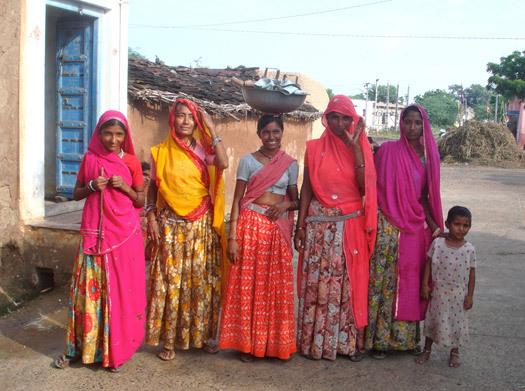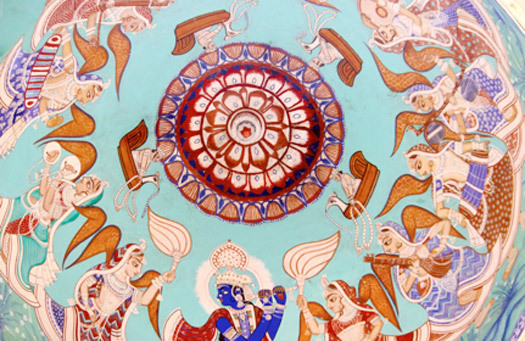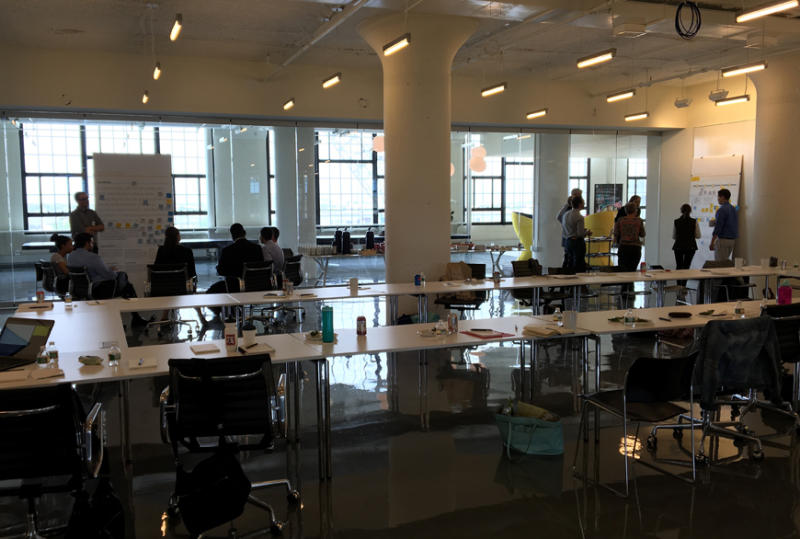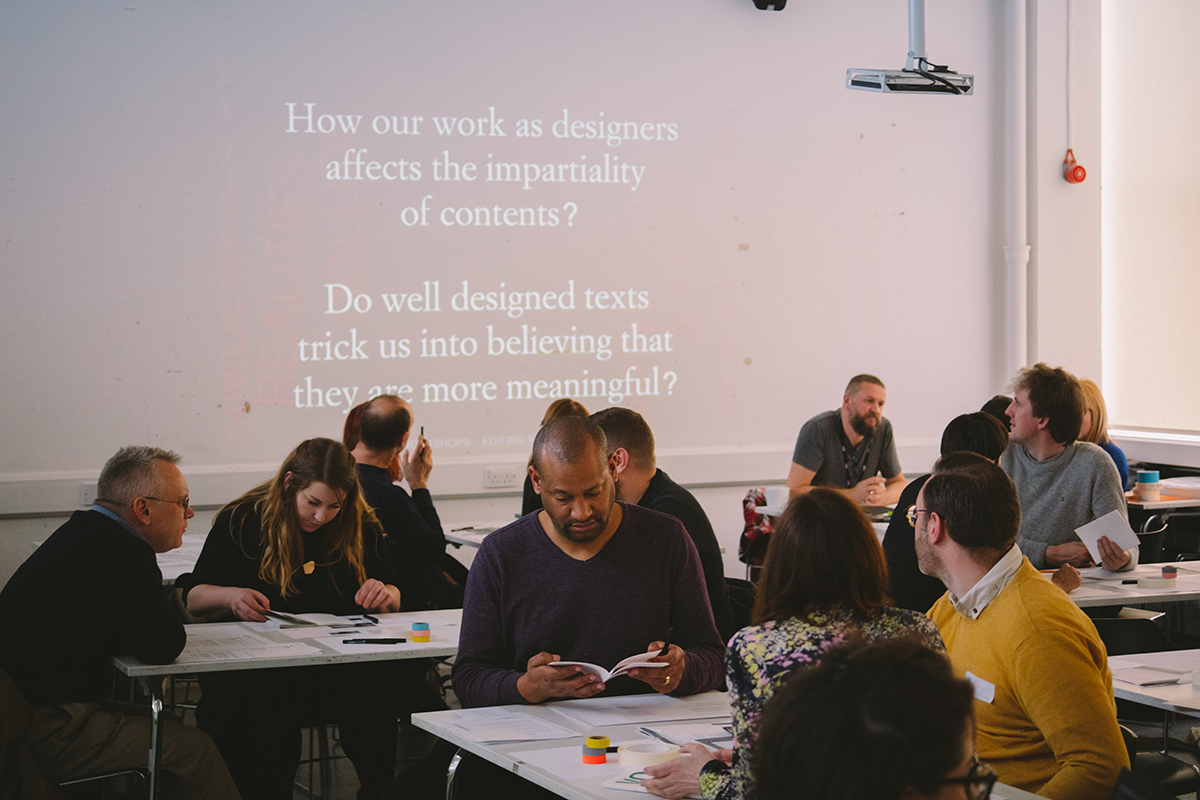
September 27, 2011
Kyoorius Designyatra Festival 2011

Women in the village of Fort Barli, Rajasthan. Photo Adrian Shaughnessy
The recent Kyoorius Designyatra Festival 2011 in Goa, India, was a rip-snorting success: a brilliant two days of presentations, discussion, networking, companionship, and — for this attendee at least — lashings of authentic Indian cuisine, and a chance to feel the hot blast of innovation that is modern India.
Despite the shanty towns that encircle Mumbai airport, countless blue tarpaulin-roofed shacks, their walls made from repurposed Vodafone and Pepsi billboards (what do the brand mangers of these corporate behemoths think about this contravention of their brand guidelines?), India feels like a country exploding with the sonic boom of modernity.
And of course, to be a truly modern nation, countries need to possess — among many other things — a vibrant contemporary design culture. India doesn’t need lessons from anyone in the question of aesthetics and philosophy: Indian art and thought have been among the word’s greatest treasures for centuries. But in the area of modern design and communications, India seems hungry to learn from Western designers working in graphics, digital communication, installation and product design — especially when the designers are of the highly individualistic calibre of Irma Boom, Designyatra’s undoubted star.
It is against this backdrop that the festival (now in its 7th year and run by the charismatic Rajesh Kejriwal and a team of energetic people) have created a conference that should be considered among the foremost design conferences in the world. And for sheer effervescent energy, it’s probably the best there is.
Perhaps my enthusiasm is overly zealous: the end of any successful and enjoyable design conference is usually accompanied by euphoria. Speakers leave with a warm glow of satisfaction, having survived the ordeal of public exposure and perhaps received a few generous plaudits from appreciative audience members; delegates go home with a sense of enlarged horizons; the organizers unplug the data projectors and microphones having concluded a successful event that probably took a year to organize, and which, with any luck, does not involve too great a financial loss. (Kejriwal talks about running Designyatra on a “not-for-loss” principle).
And yet, long after I left Goa, my enthusiasm persisted. Designyatra was a triumph. But what was so good about it? Was it the magic ingredient of Goa — a sort of Malibu by the Arabian Sea, but without the plastic surgery and lap dogs in handbags? Was it the mix of speakers? Was it the event’s MC, Michael Johnson of johnsonbanks, who is turning into a fixture on the conference circuit? Have I mentioned the food?
Designyatra was all of these things, yet I cant help thinking that special ingredient was the audience. I can’t remember a more emotionally demonstrative group at any design event I’ve ever attended. When compared to the laconic cool of Western audiences, the Indian crowd was a riot of emotional feedback and discerning empathy.
They demonstrated their appreciation with frequent applause. Any designer who showed a smart bit of work was guaranteed whistles and whoops of appreciation. For normally introverted graphic designers, pale from hours spent in front of computer screens, it doesn’t get more gratifying than this.
I also spotted something else: Talking to delegates, I detected a wish to see less show-and-tell of the self-congratulatory kind and more revelations about what goes on under the hood. It is inevitable that designers will want to show only their best work and tell stories about their triumphs rather than their failures. But this was India, and they haven’t got time just to admire — they want to learn, absorb and become the best. They whooped and yelled when they saw something they liked — but they also knew when they were being palmed off with puffery.

Ceiling painting, City Palace, Udaipur. Photo Lynda Shaughnessy
After Goa, I travelled to rural Rajasthan. Here is a design culture that assaults the senses with intoxicating color, texture, pattern and form. No surface is undecorated. Even walls painted with flat color are allowed to flake and peel in sumptuous abstract patters. Fabrics, textiles and hilltop palaces offer dazzling evidence of Indian visual ingenuity. In comparison to the formulaic. Westernized, over-Photoshopped billboards and advertising hoardings that pollute urban areas of India, Rajasthan’s indigenous design — rooted in centuries of tradition — offers a visual experience that is as enveloping and transforming as any in the world.
If Indian designers ever find a way of incorporating their indigenous design vocabularies into a modern Indian graphic lingua franca (and I’m not talking about pallid fusions of East and West), then watch out, world. Not only will India dominate geopolitics — it might also dominate global design.
Observed
View all
Observed
By Adrian Shaughnessy




